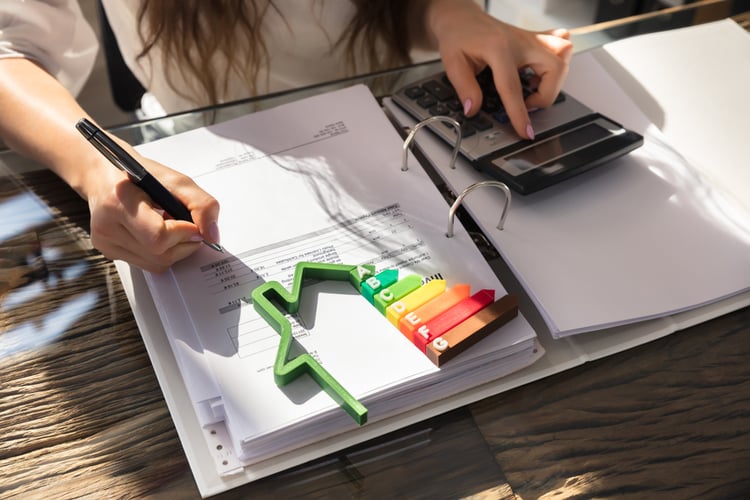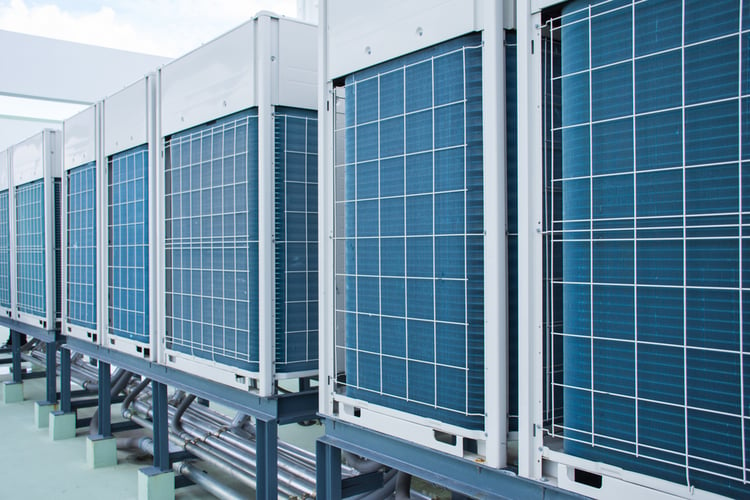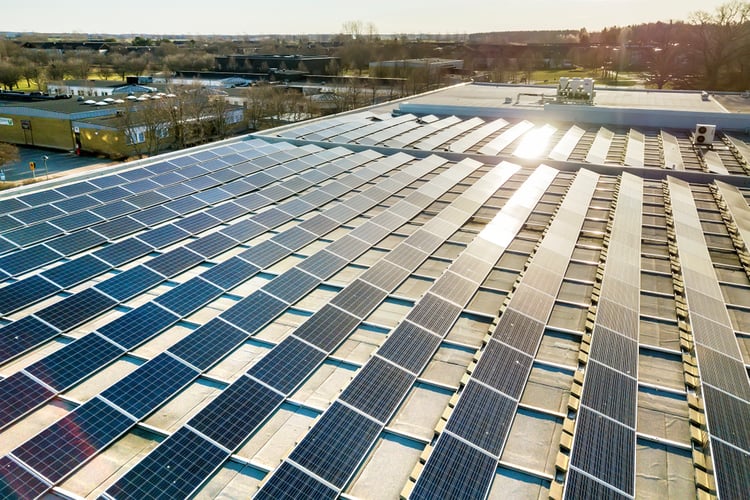Meeting Local Law 97 with Energy Efficiency and Renewable Sources

Starting from 2024, NYC buildings with an area larger than 25,000 sf will be subject to emission limits under Local Law 97 of 2029, which is part of the Climate Mobilization Act. The buildings covered by the law will be subject to a penalty of $268 per year, for every metric ton of CO2 equivalent above their corresponding limit. Since building emissions are calculated with energy usage, owners can invest in energy efficiency measures and clean renewable generation to reduce their emissions below the limit.
The emission limits for 2024-2029 are designed to impact the top 20% of buildings in terms of emissions, but the 2030-2034 limits are designed to impact the top 75%. In other words, the second set of limits is much more stringent. An effective strategy for building owners can be to focus on energy efficiency measures with low costs and quick payback periods to reach the 2024 limits. They can then focus on deep retrofits and other measures that involve larger investments, to meet the more stringent limits that apply from 2030.
Want to get an estimate for any applicable carbon penalty for your building as a result of NYC Local Law 97? Try our LL97 carbon emission calculator
In this article, we will discuss how energy efficiency measures and renewable sources can help you meet the LL97 emission limits in NYC, avoiding major penalties for your building.
Getting an Energy Audit and Commissioning Services

When dealing with building energy consumption, a one-size-fits-all approach is not possible. Each building is unique, and energy saving measures that work in one property may be completely ineffective in another one. Simply investing in energy upgrades without a professional analysis is not recommended, or you could end up spending in measures that achieve little or no savings in your building.
- To achieve the best results with energy efficiency measures, the best starting point is a professional energy audit.
- Your building will be analyzed by experienced consultants, and they will propose the measures that work best based on the specific conditions of the property.
- This way, a building can be upgraded more efficiently, without wasting capital on modifications that don’t contribute to savings and emission reductions.
Another professional service that is also very helpful is building commissioning. In simple words, it can be described as making sure that all building systems operate as intended by the original design. Energy is often wasted by equipment that is configured incorrectly, sensors that have not been calibrated, and similar issues. The commissioning process may also involve minor repairs or modifications.
Actually, Local Law 87 of 2009 requires energy audits and commissioning for NYC buildings at 10-year intervals. These two services are a great starting point to save energy, and you also stay compliant with LL87 by getting them.
Reducing Emissions with Energy Efficiency Measures

Under LL97 of 2019, emissions are calculated based annually for each energy source used by the building. The emissions associated with electricity are calculated per kilowatt-hour, and the emissions for other sources are calculated per kBTU (1000 BTU) - natural gas, district steam, #2 fuel oil and #4 fuel oil. There are emission factors for all energy sources, which are included in Local Law 97:
- Electricity = 0.000288962 tCO2e / kWh
- Natural gas = 0.00005311 tCO2e / kBtu
- Steam = 0.00004493 tCO2e / kBtu
- #2 fuel oil = 0.00007421 tCO2e / kBtu
- #4 fuel oil = 0.00007529 tCO2e / kBtu
For example, if you implement an energy efficiency measure that saves your building 100,000 kWh per year, the emissions reduction for that measure will be 28.90 tCO2e. Similarly, a measure that saves you 10,000 therms of natural gas (1,000,000 kBTU) will be cutting your building emissions by 53.11 tCO2e.
A professional energy audit will include estimated savings for all the energy efficiency measures proposed, and the corresponding emissions can be calculated with the factors provided in LL97. In other words, an energy audit is useful for planning how you will cut building emissions below the corresponding limits on time.
Using Renewable Energy to Cut Building Emissions

Local Law 97 allows the use of clean distributed energy resources to reduce emissions and avoid penalties. This means you don’t have to achieve the full emissions reduction with energy savings - producing your own clean energy to offset emissions is also valid.
The description of clean distributed energy resources in LL97 covers hydropower, solar photovoltaics, geothermal wells and loops, tidal energy, waves, water currents and wind. Energy storage systems are also covered, and they include batteries, thermal systems, mechanical systems, compressed air systems and superconducting equipment.
For example, if your building uses a solar power system that generates 500,000 kWh per year, that electricity is subtracted from the amount that would be used to calculate emissions. If the building uses 2,000,000 kWh per year, the corresponding emissions are 577.92 tCO2e. However, if 500,000 kWh come from clean solar power, the emissions are only calculated for 1,500,000 kWh, resulting in 433.44 tCO2e. In this case, solar power has reduced building emissions by 144.48 tCO2e per year.
Conclusion
Energy efficiency measures and onsite clean energy sources can help your building reduce its emissions, meeting the LL97 limits that apply starting from 2024. However, a professional energy audit is recommended first, so you can determine the best way to proceed. Commissioning can also help you find the low-hanging fruit, achieving some energy savings and emission reductions at minimal cost and with a quick payback.

Anuj Srivastava
Anuj Srivastava is a principal partner at NY Engineers. He is known for his MEP franchise market knowledge. Anuj is currently leading a team of 100+ MEP/FP engineers and has successfully led over 1500 franchise projects in the US.
Join 15,000+ Fellow Architects and Contractors
Get expert engineering tips straight to your inbox. Subscribe to the NY Engineers Blog below.



